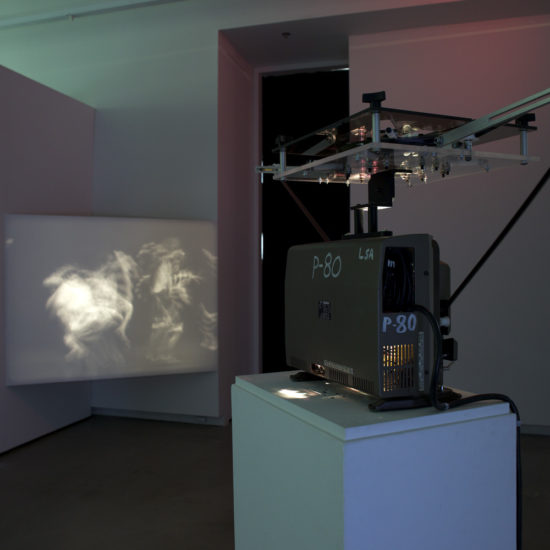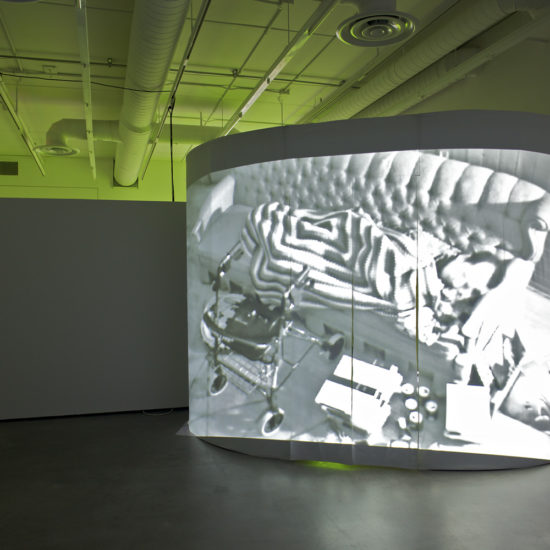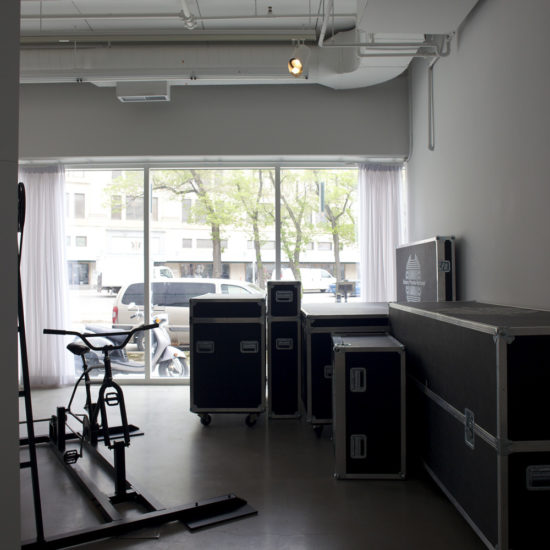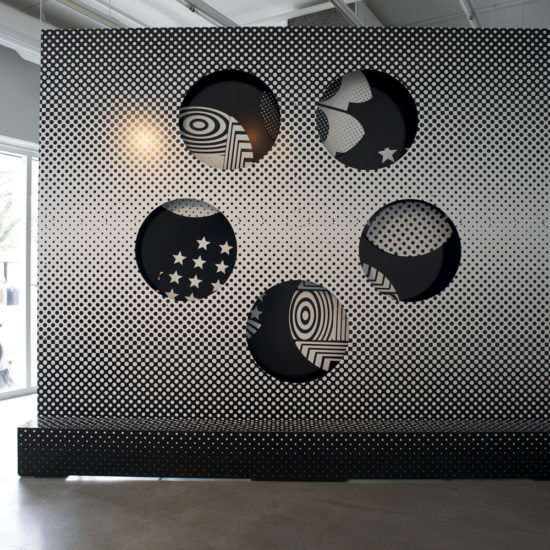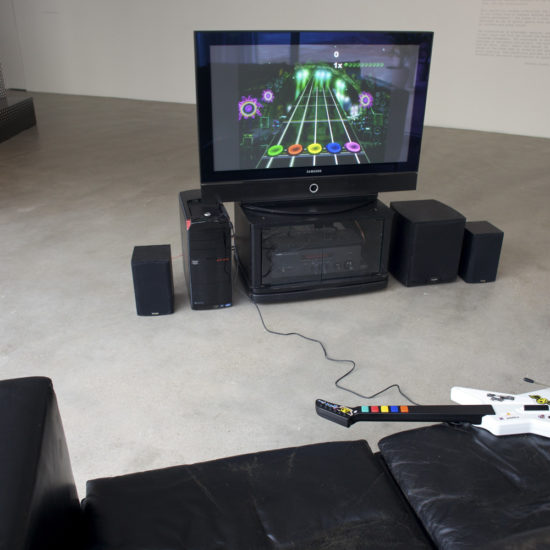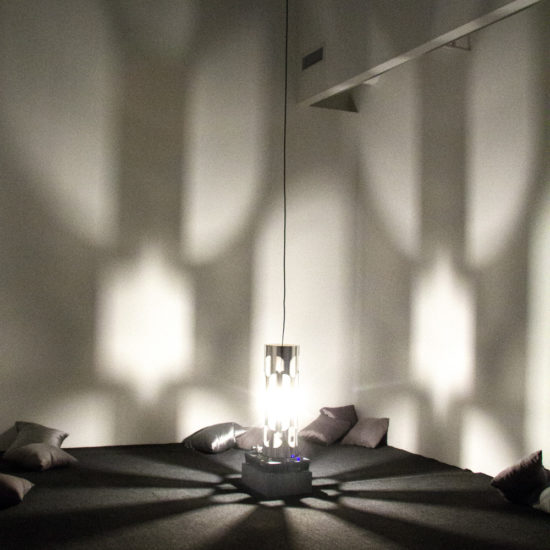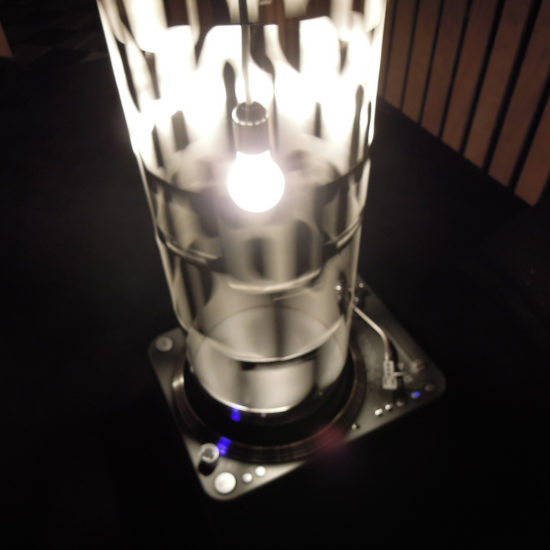Artists: Cory Arcangel (New York), Kevin Ei-ichi deForest (Winnipeg/Brandon), Dan Graham (New York), Rodney Graham (Vancouver), Brion Gysin (Edmonton/Paris) & Ian Somerville (Cambridge), Joachim Koester (Copenhagen), Jennifer West (Los Angeles), and Hannah Wilke (New York).
Through film, video and installations, the artists in Sound & Vision: Crossroads explore popular music as an agent and conduit of social change. Popular music accompanies or is constitutive of some of our most resonant and widely shared cultural moments. The ecstatic potential of rock music provides a space to exceed standardized terms of representation, language and control. This exhibition focuses on rock music as a popular and evocative avenue of thought and action. At least since its origin in slavery and blues music of the southern United States, popular or experimental music has been used by multiple generations to re-imagine the world.
The intersection of sound and vision is constituent of rock music experiences, immersive multi-media performances and “virtual reality.” Media such as film, video, performance and interactive sculpture and installation lend themselves to the particularities of temporal and shared experience. The structural components of film and video – light, sound, motion and optics – are dependent upon the human body and consciousness to cohere meaning. The transformation of experience, and the expansion of consciousness, has historically been a preoccupation in rock music, one that combines both physical and conceptual realms. The body has always been implicated in rock music; to ‘rock ‘n’ roll’ was a euphemism for having sex.
The mythologised promise of rock music is freedom, and rebellion, and by extension, utopia. The works in this exhibition create an open-ended conversation, spanning several decades, and invoking the kind of “secret history” in which, for example, critic Greil Marcus, delineates a social, political and cultural narrative spanning the medieval Brethren of the Free Spirit, Dada, punk rock, and the Situationists.
Brion Gysin and Ian Somerville’s Dreamachine (1960) is a sculptural apparatus created using a record player and light to invoke physically altered consciousness. In Rock My Religion (1982), Dan Graham connects the ecstasy of the 18th century American religious dissidents the Shakers and punk rock. Joachim Koester’s Tarantism (2007)explores the physical and emotional connotations of dance as a potentially emancipatory practice stemming from the Middle Ages. In Kevin Ei-ichi deForest ‘s Orpheus Groove (for Dad) (2012) the viewer walks through the projection screen showing a video incorporating Cocteau’s Orpheus(1950), after the legendary musician, poet and prophet. In this work, one literally inserts their body into the visual plane/space of film. Cory Arcangel’s Composition #7 (2009) wryly takes its name from composer La Monte Young’s extended composition in which the listener will experience their own bodies inside sound. Jennifer West’s films Led Zeppelin Alchemy Film (2007) and Nirvana Alchemy Film (2007) reference film maker Tony Conrad’s structural film experiments of the 1960s but add a visceral and performative element in the production of the film by “treating” the stock through performance with chemicals, food and laxatives, referencing the body and lyrics which inspire each film. Rodney Graham’s Rotary Psycho-Opticon (2008) references the roto-reliefs of Marcel Duchamp (1935) and is a stage prop, a site to enact desire, further inspired by a performance by Black Sabbath on 1970s Belgian TV. Hannah Wilke’s Hello Boys (1975) documents a performance that is simultaneously framed as a public representation and internal exploration accompanied by rock music.
The exhibition invokes alternately the personal, domestic spaces of the living room or teenage bedroom and the space of mass public performance—the stage of a rock concert. The transition describes an arc of social agency from the personal to the public on intimate and grand scales.
The accumulation of knowledge, emotion, and physical experience in art, music and film can exceed the boundaries of language and knowledge management. The crossroads in this exhibition include meetings of the public and private, the historical and present, and the optic, sonic, haptic and beyond. By implicating the excesses of the human body as conduits and agents in radicalizing social practice, this exhibition provides a forum for re-interpreting the social construction of space.
There will be an artist talk with Kevin Ei-ichi deForest at Plug In on Saturday, April 14 at 3 pm. The exhibition curator and Plug In Artistic Director Anthony Kiendl will give a curator’s talk on Saturday, May 12 at 3 pm.
A limited edition vinyl LP record is now available to coincide with this exhibition. The Contour 2011 Sound + Vision LP is co-published by Plug In Editions and Contour vzw, Mechelen, Belgium. This LP features tracks by artists not available any where else including: Lee Ranaldo (Sonic Youth), Chicks on Speed, Pierre Bismuth, Edith Dekyndt, Cory Arcangel, Club Moral, and more. Printed and pressed in edition of 500 in Amsterdam, this album will not be re-printed.
The Contour 2011 Sound & Vision LP is available at the Plug In ICA Art Book Shop, and online. $30.
A publication Sound & Vision: Beyond Reason will be published by Plug In Editions and Contour, Mechelen. Featuring essays by: Christophe Van Gerrewey (Antwerp), Anthony Kiendl (Winnipeg), Jeanne Randolph (Winnipeg) and Yann Chateigne Tytelman (Geneva).
The exhibition public programs are all free and everyone is welcome.
Plug In wishes to thank: Contour 2011 (Mechelen, Belgium), Jan Mot(Brussels), 303 Gallery, Team Gallery and Electronic Arts Intermix (New York) and Marc Foxx (Los Angeles).



